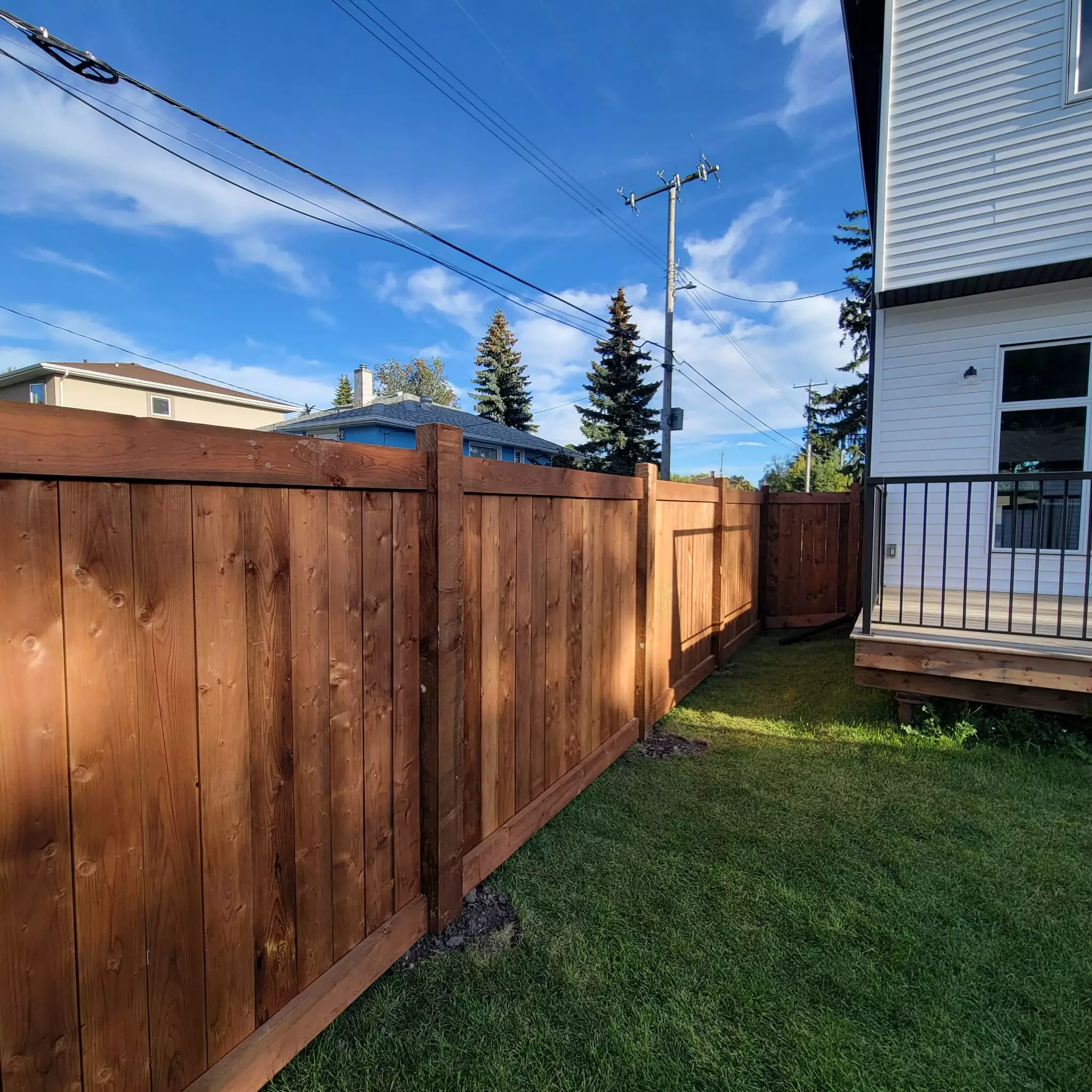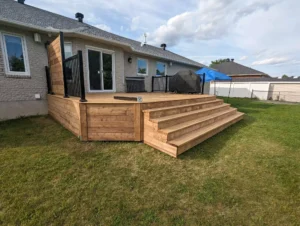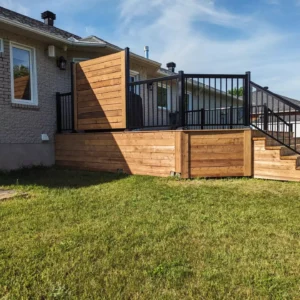Whether you’re planning to install a new fence for privacy, security, or curb appeal, knowing the local regulations is essential before you dig. In Carleton Place, Ontario, specific bylaws govern fence height, location, materials, and even who pays for shared fences between neighbours. Ignoring these rules can lead to fines, legal disputes, and costly rework. This guide will help homeowners and property developers in Carleton Place understand key fence regulations and how to navigate them with confidence.
Why Fence Bylaws Matter in Carleton Place
The Town of Carleton Place has fence regulations designed to balance individual property rights with community standards. These rules ensure safety, visibility for drivers, and consistent neighbourhood aesthetics while reducing conflicts between neighbours.
Before you start your project, it’s important to review the local zoning bylaws and obtain any necessary permits. You may also need to notify or get consent from adjoining property owners if the fence lies on or near shared boundaries.
- Do You Need a Permit to Build a Fence?
Generally, you do not need a permit to build a fence in Carleton Place as long as you comply with the local Fence Bylaw and Zoning Regulations. However, if your property lies near conservation areas, waterways, or is governed by subdivision agreements, additional approvals may be required.
Still, it’s wise to check with the Building Services Department before beginning work. In some cases, if your fence is part of a larger construction project or near public easements, a permit or inspection might be needed.
- Maximum Fence Heights in Carleton Place
According to the Town of Carleton Place’s Fence Bylaw:
- Rear and Side Yard Fences:
Up to 6.5 feet (approximately 2 metres) in height is permitted. This is ideal for privacy and enclosing backyards. - Front Yard Fences:
The maximum height is 3.3 feet (approximately 1 metre). This is to maintain visibility and safety for drivers and pedestrians at intersections and driveways. - Corner Lots:
Special regulations apply to maintain clear sightlines at intersections. Fences must not obstruct driver visibility within sight triangles, typically a 7.5-metre (25-foot) setback from the corner. - Pool Enclosures:
Fences surrounding swimming pools must be a minimum of 5 feet (1.5 metres) tall and comply with Ontario’s Pool Enclosure regulations, including self-latching, self-closing gates. Permits are required for pool fencing.
- Fence Materials and Prohibited Types
There are no strict restrictions on fence materials in Carleton Place, but the following guidelines generally apply:
✅ Acceptable Materials:
- Wood (pressure-treated or cedar)
- Vinyl or PVC
- Chain link
- Decorative iron or aluminum
- Composite materials
❌ Typically Not Allowed:
- Barbed wire (in residential areas)
- Electric fences (only permitted in agricultural zones)
- Sharp spikes or dangerous protrusions
- Materials that obstruct water drainage or public access easements
Your fence must be maintained in a state of good repair. A leaning, broken, or graffiti-covered fence may be deemed a public nuisance and subject to enforcement by bylaw officers.
- Fence Location and Property Lines
One of the most common causes of fence disputes is installing a fence on the wrong side of the property line. Here’s what to keep in mind:
- It is your responsibility to confirm your property boundaries. Hiring a licensed Ontario Land Surveyor is the most accurate method.
- Fences should typically be built just inside your property line to avoid encroachment.
- If the fence will straddle a shared property line, written consent from the neighbouring property owner is highly recommended.
- Be cautious near easements, drainage ditches, hydro poles, or sidewalks—fences that interfere with utility access may need to be relocated at your expense.
- Shared Fences Between Neighbours: Who Pays?
In Ontario, the Line Fences Act governs how costs are split for fences built on the boundary line between two properties:
- If both parties agree, they may share the cost and construction responsibility.
- If one neighbour refuses, the party who wants the fence can build it entirely on their own property at their own cost.
- Disputes can be resolved using the local Fence-Viewers system, where appointed officials assess the situation and make a binding ruling.
Tip: Always communicate clearly with neighbours before starting. A simple conversation can save you months of tension and unnecessary legal action.
- Special Considerations: Heritage Districts and Conservation Lands
If you live in a designated Heritage Area or near a protected watercourse (like the Mississippi River), your fence project may require extra approvals from conservation authorities or the Heritage Committee.
Make sure to check with the Mississippi Valley Conservation Authority (MVCA) and the Carleton Place Planning Department if your property falls under these special categories.
- Enforcement and Penalties
Non-compliance with Carleton Place fence bylaws can lead to:
- Orders to remove or modify the fence
- Fines or administrative fees
- Legal action in extreme cases
To avoid these headaches, always verify your plans with the Building Department before installing a fence.




